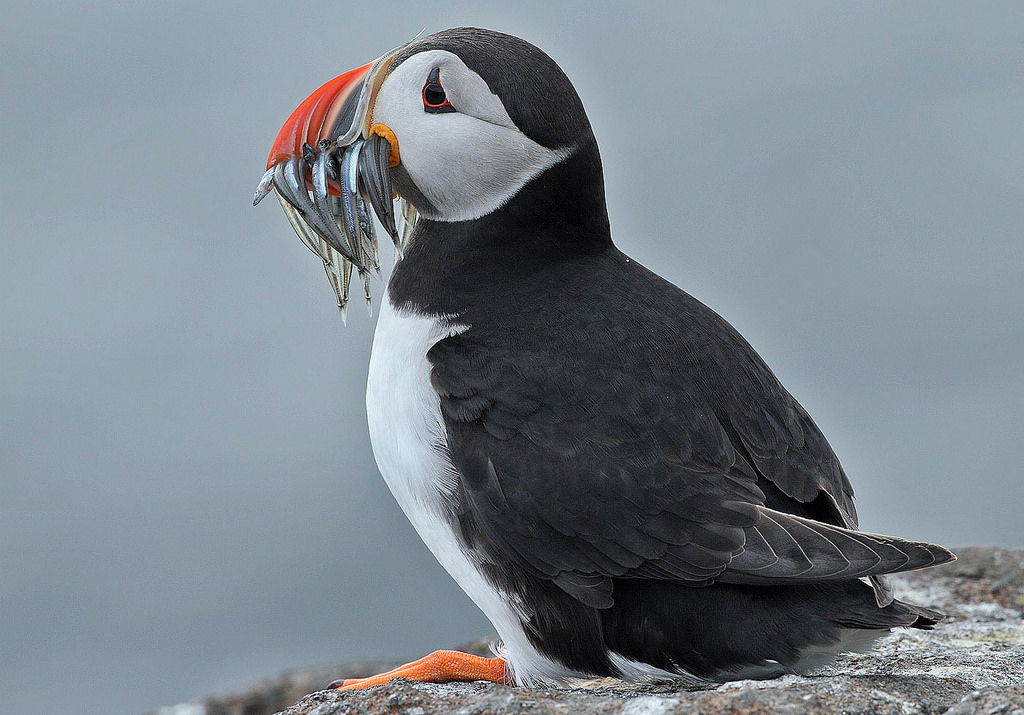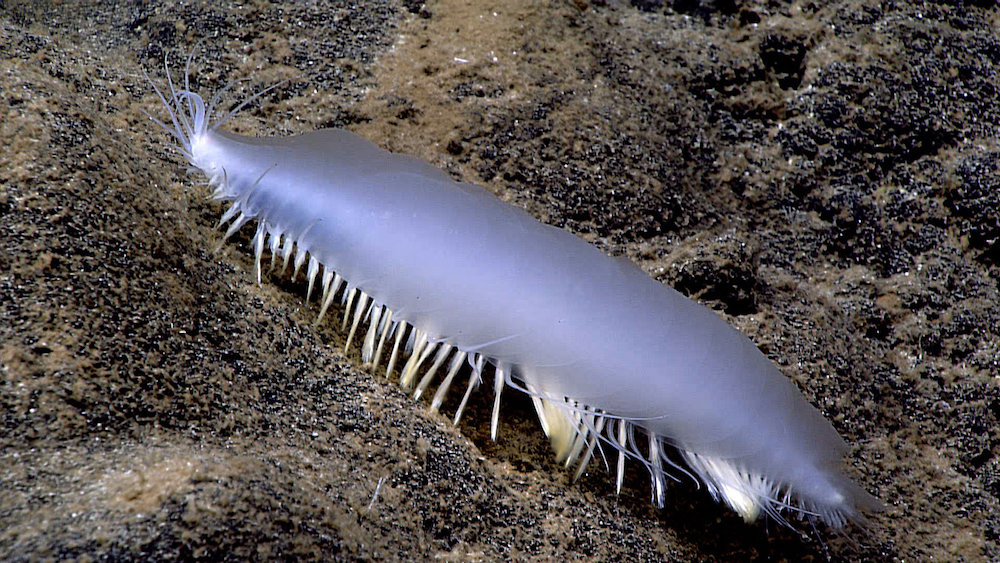Putting a value on life in the ocean
Rachel Cavanagh, lead author of the study featured in this blog, is co-chair of Future Earth's Ocean Knowledge-Action Network. Learn more about this dynamic network for research on ocean sustainability here. Cavanagh is also the Executive Officer of Integrating Climate and Ecosystem Dynamics in the Southern Ocean programme (ICED), a regional programme of Integrated Marine Biosphere Research (IMBeR). IMBeR is a global research project of Future Earth.
The stretches of ocean off the coast of the United Kingdom, between Pacific Island nations and in the chilly waters around Antarctica don’t appear to have a lot in common. They’re home to a wildly different spectrum of species. The United Kingdom is home to charismatic birds like Atlantic puffins (Fratercula arctica) and commercially fished Atlantic cod (Gadus morhua). In the Pacific, you can find sea turtles and skipjack tuna (Katsuwonus pelamis) and Adélie penguins (Pygoscelis adeliae) and Antarctic krill (Euphausia superba) in the Southern Ocean.
But recent research suggests that the experts who work to protect the future of these species, and the habitats they depend on, could learn a lot from each other. In the new study, a team of marine scientists led by Rachel Cavanagh examined the various approaches that these three regions have taken toward managing their marine resources – capturing their successes and short-comings in protecting ocean life.

An Atlantic puffin (Fratercula arctica) stuffs its beak with fish on the Isle of May off the coast of the United Kingdom. Photo: Steve Garvie via Flickr
In particular, the researchers evaluated the progress that each region had made in putting a value on their ocean environments, either in dollars and cents or non-monetary terms. That kind of “valuation” is the cornerstone of a growing approach to conservation called the Natural Capital movement. Cavanagh says that the comparison of the three watery regions suggests that such an approach to securing the future of ocean environments may hold promise. But scientists, practitioners and policy-makers will need to integrate this approach with existing conservation and management strategies and consider the value of all marine life, from big tuna down to tiny plankton.
“Global marine biodiversity is declining and threats are increasing at an alarming rate,” says Cavanagh, a researcher at the British Antarctic Survey in Cambridge. “I’m a firm believer in not reinventing the wheel, especially when time is of the essence, so sharing knowledge and expertise for successful strategies is vital.”
Natural Capital
There’s nothing new about the idea of putting a price tag on nature. Boosters of the Natural Capital movement argue that people are more likely to conserve natural ecosystems if they recognise how much they depend on them – for food, clean water, timber and many other benefits.
Cavanagh, however, says that there can often be a tendency to be too limited in what scientists and others consider “natural capital.” In the ocean, for example, calculations of the value of ocean ecosystems are often based only on what commercial fishermen can haul out of the seas – such as the value of tuna meat. But this leaves out a huge slice of ocean life and benefits that humans depend on.
“You could say, ‘well, we have valued our ecosystem because, for example, we know that our tuna fishery is worth this amount of money,” Cavanagh says. “But what we say in the paper is that while that does have benefits, it also has pitfalls.”

A polynoid polychaete worm scuttles along the sea floor. Photo: NOAA Office of Ocean Exploration and Research
Stefanie Broszeit, a researcher at the Plymouth Marine Laboratory in the United Kingdom, points to the case of the small organisms that burrow in the mud at the bottom of seas around the world. These critters, including feathery polychaete worms and tiny crustaceans called copepods, aren’t usually included in policies aimed at conserving ocean environments. But they’re still a critical part of the marine ecosystem. These organisms, for example, help to move carbon dioxide out of the water column and store it in the sediment of sea floors around the world.
“There’s still so much we don’t understand about the ocean,” says Broszeit, a co-author of the new paper. “That’s particularly true if you go to an area like the Antarctic, which is more challenging and more expensive to study. It makes it even harder to put all the pieces of the puzzle together.”
Compare and Contrast
Cavanagh argues for a more nuanced approach to valuing ocean ecosystems – one that accounts for the wide diversity of animal, plant and other life. It’s this diversity that underpins the services that humans depend on from the ocean. To begin to understand how scientists, practitioners and policy-makers might do that, she and her colleagues decided to survey what some regions of the world were already doing in this regard. The researchers published their results in the journal Proceedings of the Royal Society B.
There’s a lot to be gained from this compare and contrast approach, Cavanagh says. Take the case of two of the regions captured in the study: The tropical waters bathing 22 Pacific Island Countries and Territories (PICTs) and the ocean around Antarctica. In the PICTs, fisheries managers have taken a relatively simple approach to conserving ocean life.
Scientists in the region recently conducted an economic analysis of the local skipjack fishery, which is valued at nearly 3 billion USD. That analysis revealed something surprising: Commercial fishing fleets could make more money, not less, if they caught fewer tuna. Graham Pilling, a fisheries scientist at The Pacific Community in New Caledonia, explains that bigger tuna populations are less likely to crash if disaster strikes. As a result, fisheries regulators in the region set new limits in 2015 on how much tuna commercial fishers could harvest each year.
“Maintaining the skipjack stock at a much larger size, than where catches were theoretically maximised to ensure increased stability in the fishery and hence important revenue for island economies, was a key driver behind their decisions,” says Pilling, a co-author of the new paper.

Antarctic krill (Euphausia superba) are the basis for much of the life in the Southern Ocean, serving as food for everything from fish to whales. Photo: Miria Grunick via Flickr
That strategy, however, did not directly consider the larger ecosystem that gives rise to the tuna that people eat. In contrast, the Convention for the Conservation of Antarctic Marine Living Resources (CCAMLR), which oversees fisheries in the Southern Ocean, has not put a price tag on its marine resources.
It has, however, “pioneered” a conservation and management strategy that is based on a deep understanding of how the Antarctic ecosystem works, Cavanagh says. In these icy waters, commercial fishing boats harvest Antarctic krill for products like fish meal or human nutrional supplements. When making decisions about this fishery, the regulatory body accounts for how those decisions might affect the wider ecosystem. That includes key species that depend on krill for their survival, such as whales, seals and penguins.
The region in which experts have arguably done the most to value their marine biodiversity was the United Kingdom. The country, for example, completed a National Ecosystem Assessment in 2011. This report examined the nation’s ecosystems, from sheep pastureland to seagrass beds, illustrating how citizens depend on them for their health and livelihoods.
That broad understanding of the value of biodiversity, however, has been slow to trickle into new policies in the nation, Cavanagh says. “In the UK, they’ve forged a way forward. They’ve done a broad assessment. They’ve tried to consider as many ecosystem services as they can,” she says. “But they could still do better in how this is implemented, how this influences management strategies.”
In the end, she and her colleagues don’t think that any one of the three regions hold all the answers for protecting the planet’s seas. She advocates, instead, for a combined approach, one that takes what is working from regions across the globe and combines them into a single package.
“To do this effectively on a big scale, you would need to identify and share a range of best practices, and different regions could then adapt them to fit their own regulations and their own cultures,” Cavanagh says. “We’re certainly not saying that valuation is the be all and end all, but it can help.”
For her part, Broszeit hopes that marine scientists from different parts of the world will respond to the study’s message of learning across ocean basins. “I hope that scientists from other countries will take this paper and say, ‘Where do we fit in? What can we learn from the different examples that we have in this paper,’ so we all move toward using management approaches that are sustainable for both marine ecosystems and humans.”
DATE
November 22, 2017AUTHOR
Daniel StrainSHARE WITH YOUR NETWORK
RELATED POSTS
Spotlight on LMICs – Tired of Breathing in Pollutants? Time for Better Fuel Economy and Vehicle Standards
Future Earth Taipei Holds 2024 Annual Symposium
Spotlight on LMICs – The Future’s Juggernaut: Positioning Research as Anchors for Environmental Health